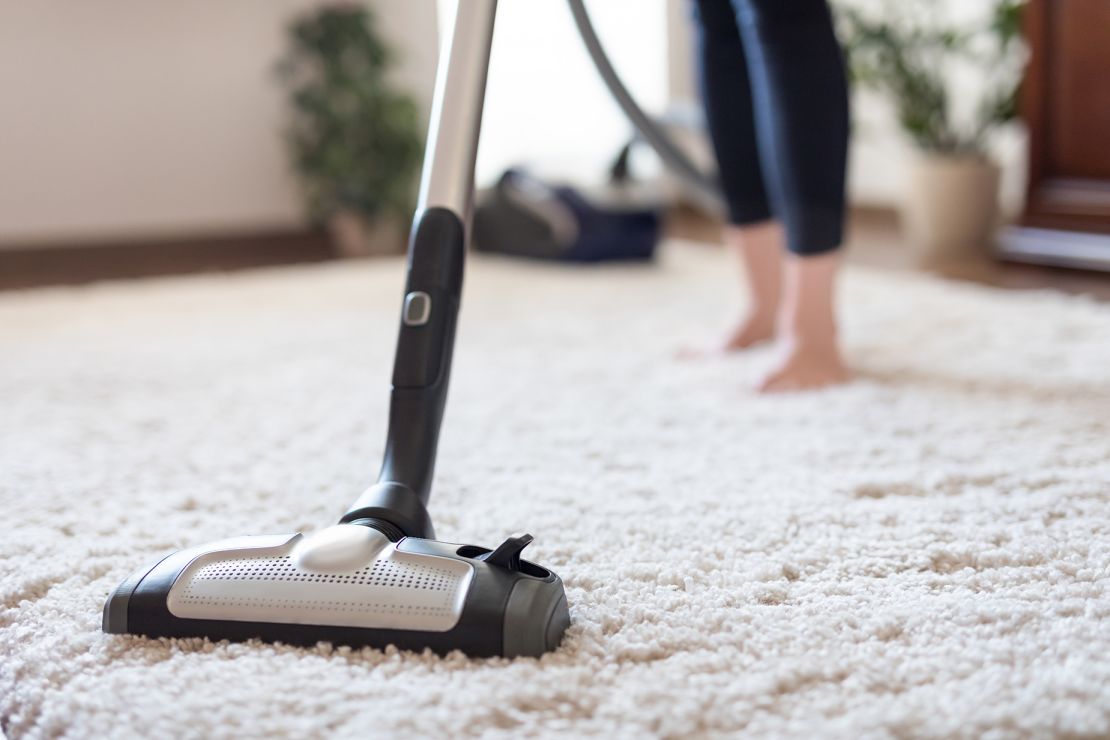Flame retardants added for decades to thousands of consumer products in the United States may raise the risk of dying from cancer, according to new research.
People with the highest levels of polybrominated diphenyl ethers, or PBDEs, in their blood had approximately a 300% increased risk of dying from cancer compared with people with the lowest levels, the study found.
“To our knowledge, this is the first study examining the association of PBDE exposure with risk of cause-specific mortality in the general adult population from the US,” the authors wrote.
The new report analyzed levels of the chemical compounds in the blood of 1,100 people between 2003 and 2004 who were participating in the National Health and Nutrition Examination Survey, a longitudinal federal study on the health of US citizens.
Researchers then compared PBDE levels with death certificates between 15 and 17 years later, according to the study published Monday in the journal JAMA Network Open. While the study found a significant association between PBDEs and deaths from all cancers, researchers could not determine specific types of cancers from the available data.
Past research discovered an association between flame retardants of different types and the possibility of cancer, but finding a link to cancer mortality advances the science, said Dr. Leonardo Trasande, a professor of pediatrics and population health at NYU Langone Health in New York City. He was not involved in the study.
“The new study links PBDEs to deaths from cancer, building a case for the association between flame retardants and cancer mortality being real,” said Trasande, who researches the impact of plastics, flame retardants and other chemicals on children.
“And because these chemicals have long half-lives and therefore stay in the human body for years, this impact is going to continue because we can’t get them out of the environment overnight,” he said.
A spokesperson for the American Chemistry Council, which contains an alliance of companies that make and distribute flame retardants, sent CNN the following comments in an email. “We have not had the chance to thoroughly review the report on polybrominated diphenyl ethers (PBDEs), but we consistently advocate for the use of sound scientific research and data.
“The North American Flame Retardant Alliance (NAFRA) and its member companies are dedicated to the responsible production, use, and management of chemistry and chemical products in a manner that protects the public health and our environment, including flame retardant chemistries that are designed to protect lives, homes, valuables, and the environment by preventing or slowing the spread of fires.
Health dangers of PBDEs
Polybrominated diphenyl ethers are known as endocrine disruptors, which means they interfere with the body’s hormones. The chemical compounds have been linked in studies to poor blood sugar metabolism, gestational diabetes, obesity, thyroid disease, some cancers, reproductive issues and neurodevelopmental disorders.
Exposure to PDBEs is nothing new — tests have found most people in the United States have these endocrine disruptors in their blood at levels that are about three to 10 times greater than those found in people in European nations, according to the US Centers for Disease Control and Prevention.
Flame retardant chemicals also can pass to developing fetuses via the placenta and to newborns through breast milk, past research has found.
Today, PBDEs are the greatest contributor to intellectual disability in children, resulting in a total loss of 162 million IQ points and more than 738,000 cases of intellectual disability, according to an August 2020 study.
How you are exposed to PBDEs
Manufacturers use flame retardants in all types of padded products, such as sofas, loveseats, recliners, office chairs, car upholstery, infant car seats, and some toys, as well as carpet padding, foam-padded yoga mats and padded baby items. Electronics and kitchen appliances may also be coated with the chemicals to reduce the chance of a fire.
Two types of PBDEs were voluntarily removed from the US market in 2004. However, the US Environmental Protection Agency did not regulate decabromodiphenyl ether, or DecaBDE, a flame retardant linked to cancer used in textiles, televisions, computers, building and construction materials, and imported articles such as automotive parts, until January 2021.
In some cases, the industry has replaced these chemicals with newer phosphorus-based flame retardants, Trasande said, adding that researchers are now concerned these chemicals may be linked to cancer as well.
Many of the older chemicals, including PBDE, still exist in vintage items, such as the foam in older sofas and carpet padding, but a key route of exposure is contamination — flame retardants have leached from landfills over decades to pollute the air, soil, groundwater, rivers and streams.
Exposure to these chemicals occurs via contaminated household dust and consumer products, as well as from residues in food, especially food with a high-fat content such as fatty fish, according to the CDC.
That’s because once PBDEs are in the environment, they accumulate in the fat of animals. As one animal eats another, the chemicals increase in concentration. Since humans are at the top of the food chain, they have some of the highest concentrations of PBDEs.
“These flame retardants will stay around and are detectable in all of us in the US because we live in an environment where we use products that have these chemicals added many years ago,” Trasande said.
People who work in enclosed spaces where PBDE-containing products are manufactured, repaired or recycled may have some of the highest risk, according to the CDC.
“We would note that NAFRA members do not produce PBDEs and have supported the phase-out of these substances. PBDEs are regulated globally and have declined significantly in the environment,” a spokesperson for the American Chemistry Council wrote in the email.
While PBDE levels in fish dropped by 75% over the past 20 years, that decline has slowed, and researchers still found the chemicals in 93% of all fish sampled, with some sites showing an increase, according to a March study. In fact, average levels found in fish in the US are thousands of times higher than the environmental quality standards set by the European Parliament.
In a June 2017 study, scientists detected elevated levels of PBDEs in infants nearly a decade after their phaseout in 2004, said Tasha Stoiber, a senior scientist at the Environmental Working Group, or EWG, a nonprofit health and environmental advocacy association.
“Some infants showed higher levels of PBDEs than their mothers, illustrating how legacy chemical exposures don’t immediately go away after phase-outs or bans are enacted,” she said in an email.
How to protect your family
Despite the elimination of many of these chemicals, some manufacturers may still add flame retardants to padded items such as nursing pillows, changing-table pads, crib mattresses, and nap and exercise mats, so check flammability labels for these products, according to the EWG.
“It is difficult to buy a flame retardant-free car seat and impossible to avoid these chemicals in automobile seating,” the group states in a tip sheet.

Keep existing infant car seats, foam mattress pads and furniture cushions completely encased in protective fabric that is not treated with flame retardants, as torn and exposed foam allows the chemicals to escape more quickly.
When reupholstering older couches or chairs, be sure to replace the old foam with flame retardant-free foam. Ditto for the padding under carpets, which is often made of chemically treated scrap foam — if you do the work yourself, use a mask and clean up carefully, EWG advised.
Wet mop and vacuum often, especially if there is a child in the home. Use a vacuum with a high-efficiency HEPA filter, which can trap dust and chemicals.
Get inspired by a weekly roundup on living well, made simple. Sign up for CNN’s Life, But Better newsletter for information and tools designed to improve your well-being.










